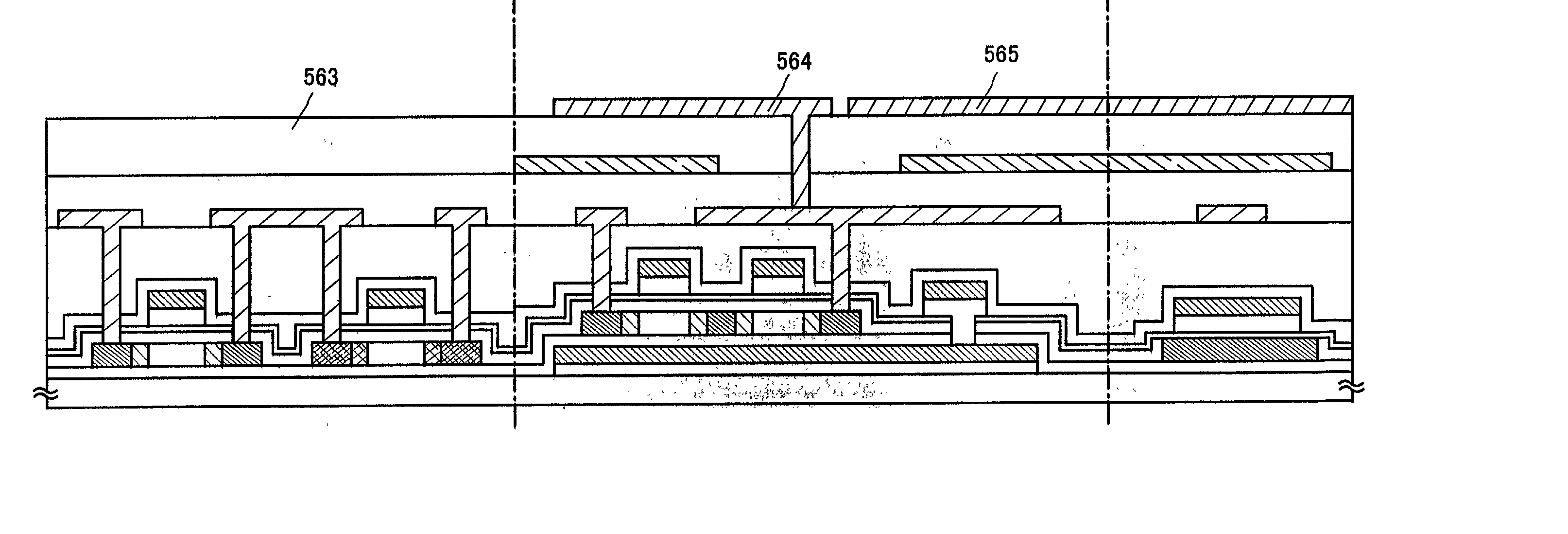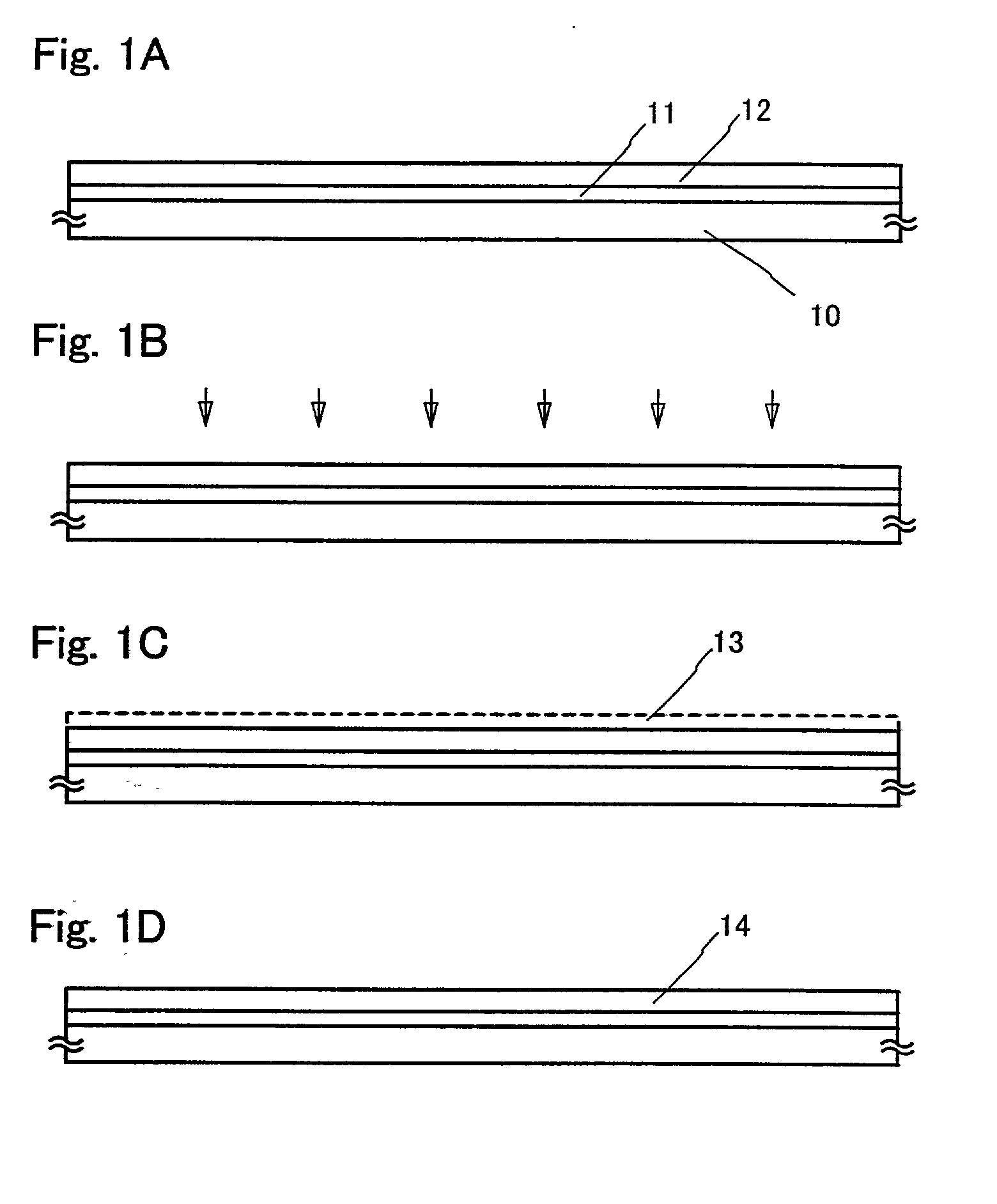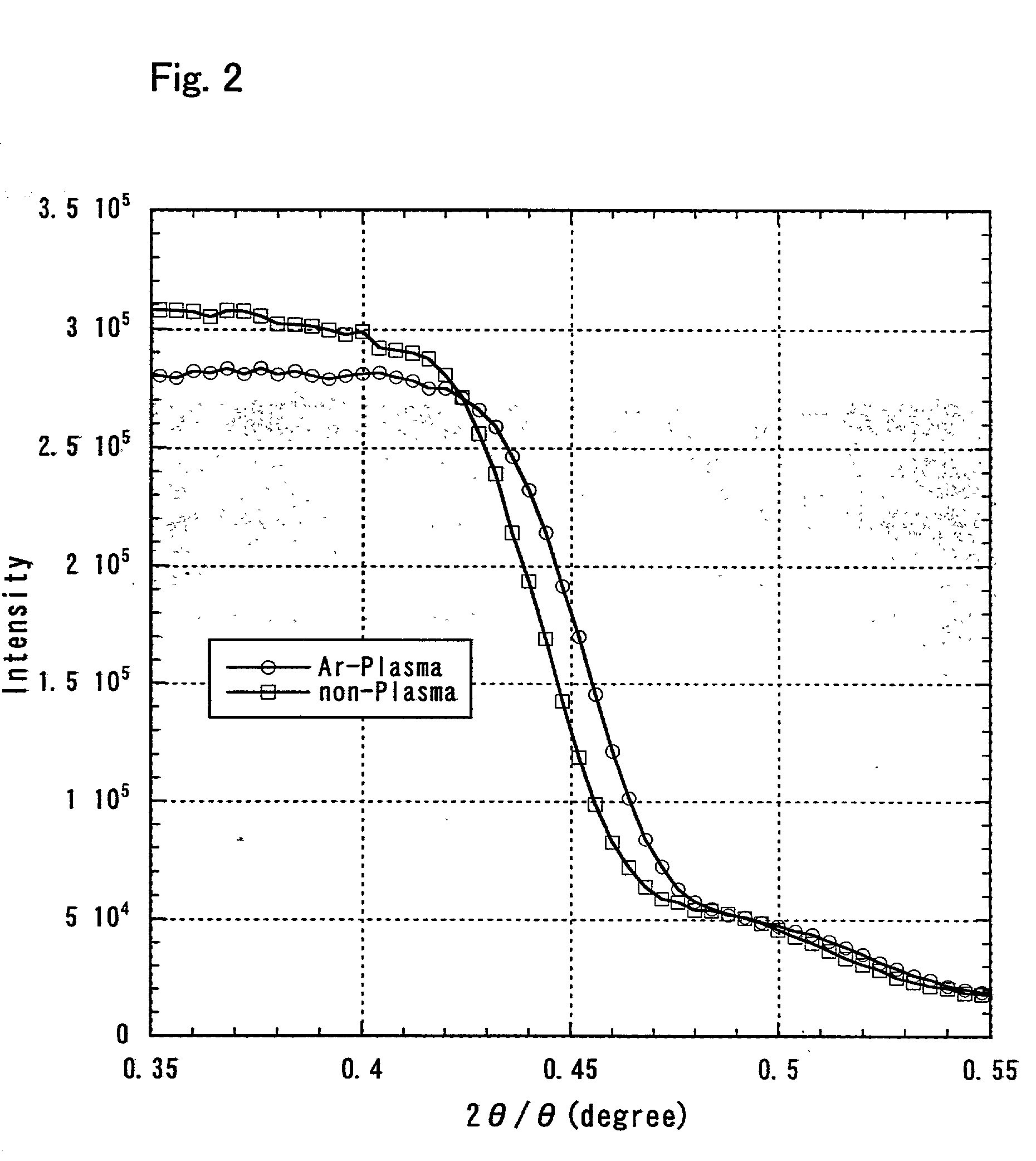Method of manufacturing a semiconductor device
a manufacturing method and semiconductor technology, applied in the direction of semiconductor devices, electrical devices, transistors, etc., can solve the problems of inability to control crystal orientation, limitation of tfts electrical characteristics, and dispersion of electrical characteristics
- Summary
- Abstract
- Description
- Claims
- Application Information
AI Technical Summary
Benefits of technology
Problems solved by technology
Method used
Image
Examples
embodiment 1
[0066] Embodiment 1
[0067] An embodiment of the present invention is explained using the cross sectional diagrams of FIGS. 1A to 1D.
[0068] A synthesized quartz glass substrate, and non-alkaline glass substrates such as barium borosilicate glass substrates and aluminum borosilicate glass substrates may be used for a substrate 10 in FIG. 1A. For example, Corning Corp. #7059 glass, #1737 glass, and the like can be applied preferably. Further, plastic substrates having heat resistant properties capable of withstanding the processing temperatures of this embodiment may also be used. A synthesized quartz glass substrate is applied in Embodiment 1.
[0069] A base insulating film 11 is formed by a known means (such as LPCVD or plasma CVD) on the substrate 10 from a film such as a silicon nitride film, a silicon oxynitride film, or a silicon oxide film. A 150 nm thick silicon oxynitride film (composition ratio: Si=32%, O=27%, N=24%, H=17%) is formed as the base insulating film in Embodiment 1.
[...
embodiment 2
[0076] Embodiment 2
[0077] In order to verify the effectiveness of the present invention, an experiment was performed as discussed below using Ar from among elements capable of being used in making a plasma (such as inert gas elements and ammonia).
[0078] A synthesized quartz glass substrate was used as the substrate 10 in FIG. 1A, and an amorphous silicon film was formed to a film thickness of 65 nm on the substrate by using an LPCVD apparatus. Test pieces of this type were then either exposed to an atmosphere in which Ar had been made into a plasma, or were not exposed thereto. The exposure conditions for the Ar plasma atmosphere are a gas flow rate of 100 sccm, an RF power of 200 W, and a substrate temperature of 400.degree. C. in a plasma CVD apparatus.
[0079] An aqueous nickel acetate solution (per weight concentration 5 ppm, volume 10 ml) is next applied to the surface of the amorphous silicon film by spin coating, forming a metal containing layer, and heat treatment is performed...
embodiment 3
[0083] Embodiment 3
[0084] An embodiment of the present invention is explained on results obtained by measuring electrical characteristics of TFTs manufactured by using crystalline semiconductor films. One of the crystalline semiconductor film is crystallized before plasma processing is performed in accordance with Embodiment 2, and the other is crystallized without the plasma processing. Note that the TFTs are manufactured in the same manner as Embodiment 6 except for step of crystallizing.
[0085] FIG. 19A shows a probability statistical distribution diagram with respect to the S value and FIG. 19B shows a probability statistical distribution diagram with respect to the electric field effect mobility. N-channel TFTs with channel forming region lengths / widths 50 / 50 .mu.m are measured in FIGS. 19A and 19B. The axis of abscissas indicates the electrical characteristic and the axis of ordinates indicates the probability distribution in FIGS. 19A and 19B. The more the probability distribu...
PUM
| Property | Measurement | Unit |
|---|---|---|
| permissible deviation angle | aaaaa | aaaaa |
| temperature | aaaaa | aaaaa |
| size | aaaaa | aaaaa |
Abstract
Description
Claims
Application Information
 Login to View More
Login to View More - R&D
- Intellectual Property
- Life Sciences
- Materials
- Tech Scout
- Unparalleled Data Quality
- Higher Quality Content
- 60% Fewer Hallucinations
Browse by: Latest US Patents, China's latest patents, Technical Efficacy Thesaurus, Application Domain, Technology Topic, Popular Technical Reports.
© 2025 PatSnap. All rights reserved.Legal|Privacy policy|Modern Slavery Act Transparency Statement|Sitemap|About US| Contact US: help@patsnap.com



